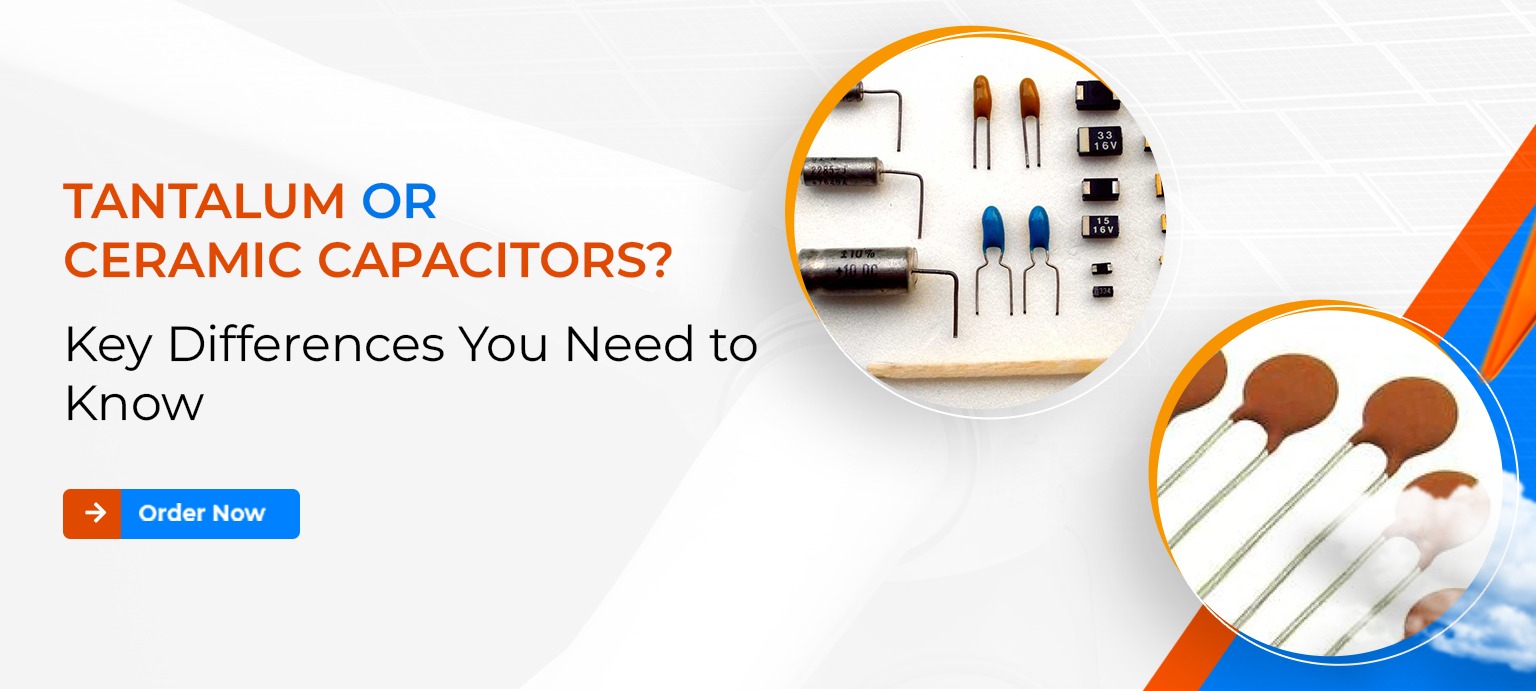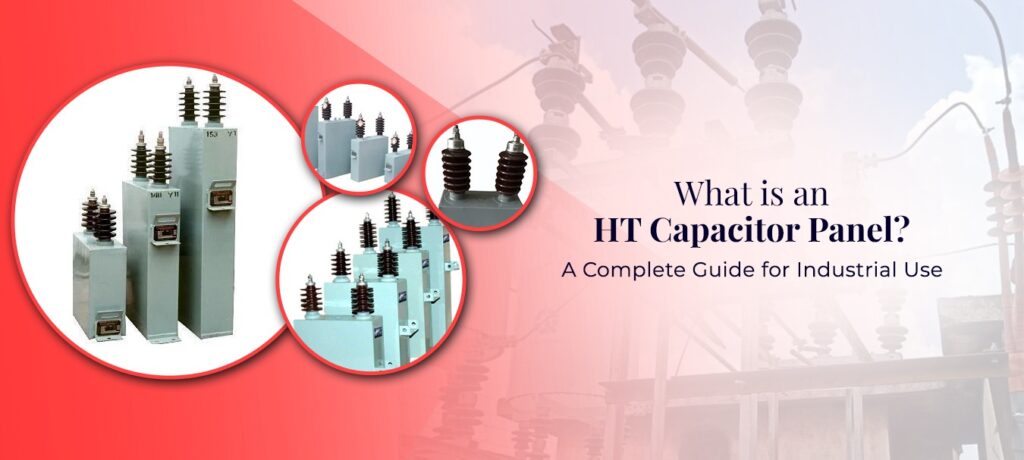Capacitors are essential components in electronic circuits, playing a critical role in energy storage, filtering, and signal processing. Among the vast array of capacitors available, tantalum and ceramic capacitors are two of the most widely used types. Each has unique properties that make them suitable for specific applications. This guide will provide you with key insights into the differences between tantalum and ceramic capacitors.
Understanding Capacitors: A Quick Overview
To understand the differences between tantalum and ceramic capacitors, it’s important to have a basic grasp of what capacitors are and how they function. In simple terms, a capacitor is a passive electrical component that stores energy in an electric field. It consists of two conductive plates separated by an insulating material called a dielectric.
When a voltage is applied across the capacitor, an electric charge builds up on the plates, creating an electric field. This stored energy can then be released when needed, making capacitors invaluable in a wide range of applications, from power supply filtering to timing circuits.
Tantalum Capacitors: Precision and Stability
Tantalum capacitors are a type of electrolytic capacitor that uses tantalum metal as the anode. These capacitors are known for their high capacitance values in a small form factor, making them ideal for compact electronic devices. Tantalum capacitors are often preferred in applications where precision and stability are crucial.
1. High Capacitance in a Small Package: One of the most significant advantages of tantalum capacitors is their ability to offer high capacitance values in a compact size. This makes them ideal for use in small electronic devices such as smartphones, tablets, and other portable gadgets where space is limited.
2. Excellent Temperature Stability: Tantalum capacitors are known for their excellent temperature stability, meaning their performance remains consistent across a wide range of temperatures. This makes them suitable for use in environments where temperature variations are common, such as automotive and industrial applications.
3. Low ESR (Equivalent Series Resistance): Another key feature of tantalum capacitors is their low equivalent series resistance (ESR). Low ESR ensures that the capacitor can efficiently handle high-frequency signals, making them ideal for use in power supply circuits and other high-frequency applications.
4. Long Lifespan: Tantalum capacitors have a long operational lifespan, which is essential in applications where reliability is critical. Their robust construction ensures that they can withstand harsh conditions and continue to perform reliably over extended periods.
5. Leakage Current: Tantalum capacitors exhibit low leakage current, meaning they lose very little charge over time. This characteristic is particularly important in applications where energy efficiency is a priority, such as in battery-powered devices.
Ceramic Capacitors: Versatility and High-Frequency Performance
Ceramic capacitors, as the name suggests, use a ceramic material as the dielectric. They are among the most versatile and widely used capacitors, available in a wide range of capacitance values and voltage ratings. Ceramic capacitors are often favored in applications where high-frequency performance and versatility are essential.
1. Wide Range of Capacitance Values: Ceramic capacitors are available in a broad range of capacitance values, from picofarads (pF) to microfarads (µF). This versatility makes them suitable for a wide variety of applications, from RF (radio frequency) circuits to general-purpose filtering and bypassing.
2. High-Frequency Performance: One of the standout features of ceramic capacitors is their excellent high-frequency performance. Due to their low parasitic inductance, ceramic capacitors are ideal for use in RF circuits, where they can effectively filter out unwanted noise and stabilize signals.
3. Low Losses: Ceramic capacitors have low dielectric losses, meaning they can handle high-frequency signals with minimal energy loss. This characteristic is particularly important in applications such as resonant circuits, where maintaining signal integrity is crucial.
4. Stability and Reliability: Ceramic capacitors are known for their stability and reliability, making them a go-to choice in many electronic circuits. Their performance remains consistent over time, ensuring that they continue to function effectively throughout the lifespan of the device.
5. Cost-Effective: Another advantage of ceramic capacitors is their cost-effectiveness. They are generally more affordable than tantalum capacitors, making them a popular choice in consumer electronics and other cost-sensitive applications.
Key Differences Between Tantalum and Ceramic Capacitors
Now that we’ve explored the individual characteristics of tantalum and ceramic capacitors, let’s delve into the key differences between the two, helping you make an informed decision based on your specific needs.
1. Dielectric Material: The most fundamental difference between tantalum and ceramic capacitors lies in the dielectric material used. Tantalum capacitors use tantalum pentoxide as the dielectric, while ceramic capacitors use a ceramic material, typically composed of metal oxides.
2. Capacitance Range: Tantalum capacitors generally offer higher capacitance values in a smaller package compared to ceramic capacitors. This makes them ideal for applications requiring high capacitance in compact spaces. On the other hand, ceramic capacitors provide a wider range of capacitance values, making them more versatile for various applications.
3. Voltage Ratings: Ceramic capacitors typically have higher voltage ratings compared to tantalum capacitors. This makes them suitable for applications where higher operating voltages are required, such as power supplies and high-voltage circuits.
4. Temperature Stability: Tantalum capacitors offer better temperature stability than ceramic capacitors, especially in environments with significant temperature fluctuations. This makes tantalum capacitors a better choice for automotive, aerospace, and industrial applications.
5. Frequency Response: Ceramic capacitors excel in high-frequency applications due to their low parasitic inductance and dielectric losses. They are the preferred choice in RF circuits and other applications where high-frequency performance is critical. Tantalum capacitors, while suitable for many applications, may not perform as well at higher frequencies.
6. Size and Form Factor: Tantalum capacitors are known for their compact size, offering high capacitance in a small package. This makes them ideal for portable electronic devices where space is at a premium. Ceramic capacitors, while also available in small sizes, may require larger packages for higher capacitance values.
7. Leakage Current: Tantalum capacitors have lower leakage current compared to ceramic capacitors, making them more suitable for applications where maintaining charge over time is important. This characteristic is particularly beneficial in battery-powered devices.
8. Cost Considerations: Ceramic capacitors are generally more cost-effective than tantalum capacitors. This makes them a popular choice for consumer electronics and other applications where cost is a significant factor. However, the choice between the two should not be based solely on cost, as the specific requirements of the application must be considered.
Choosing the Right Capacitor for Your Application
When it comes to selecting between tantalum and ceramic capacitors, the decision ultimately depends on the specific requirements of your application. Here are a few considerations to keep in mind:
1. Application Requirements: Consider the specific needs of your application. If you require high capacitance in a small form factor with excellent temperature stability, tantalum capacitors may be the better choice. On the other hand, if high-frequency performance and versatility are more critical, ceramic capacitors might be the way to go.
2. Environmental Conditions: Think about the environmental conditions in which the capacitor will be used. If your application involves extreme temperatures or harsh conditions, tantalum capacitors may offer better stability and reliability. For applications in controlled environments, ceramic capacitors can provide excellent performance at a lower cost.
3. Frequency Range: Determine the frequency range of your application. If you’re working with high-frequency signals, ceramic capacitors are likely to provide better performance due to their low parasitic inductance and dielectric losses. For lower frequency applications, both tantalum and ceramic capacitors can be suitable, depending on other factors.
4. Space Constraints: If space is a limiting factor in your design, tantalum capacitors’ compact size might be advantageous. However, if you have more flexibility in size, ceramic capacitors offer a wider range of capacitance values and voltage ratings.
5. Budget Considerations: Finally, consider your budget. Ceramic capacitors are generally more cost-effective, making them a popular choice for large-scale production and cost-sensitive applications. However, the benefits of tantalum capacitors, such as their stability and low leakage current, may justify their higher cost in certain applications.
The Bottom Line
Tantalum and ceramic capacitors each have their own unique strengths, making them suitable for different types of applications. By understanding the key differences between these two capacitor types, you can make an informed decision that best meets the needs of your specific project. Whether you prioritize size, frequency response, temperature stability, or cost, there’s a capacitor out there that’s perfect for your design.
If you’re searching for capacitors, Usha Power has what you need. We offer a wide range of high-quality capacitors tailored to meet the diverse needs of your projects. Our expert team is dedicated to helping you find the ideal capacitor that matches your specifications, ensuring optimal performance and reliability. Whether it’s for commercial or industrial use, Usha Power has the perfect solution for you. Explore our selection today and see how Usha Power can support your electronic design needs with precision and dependability.



